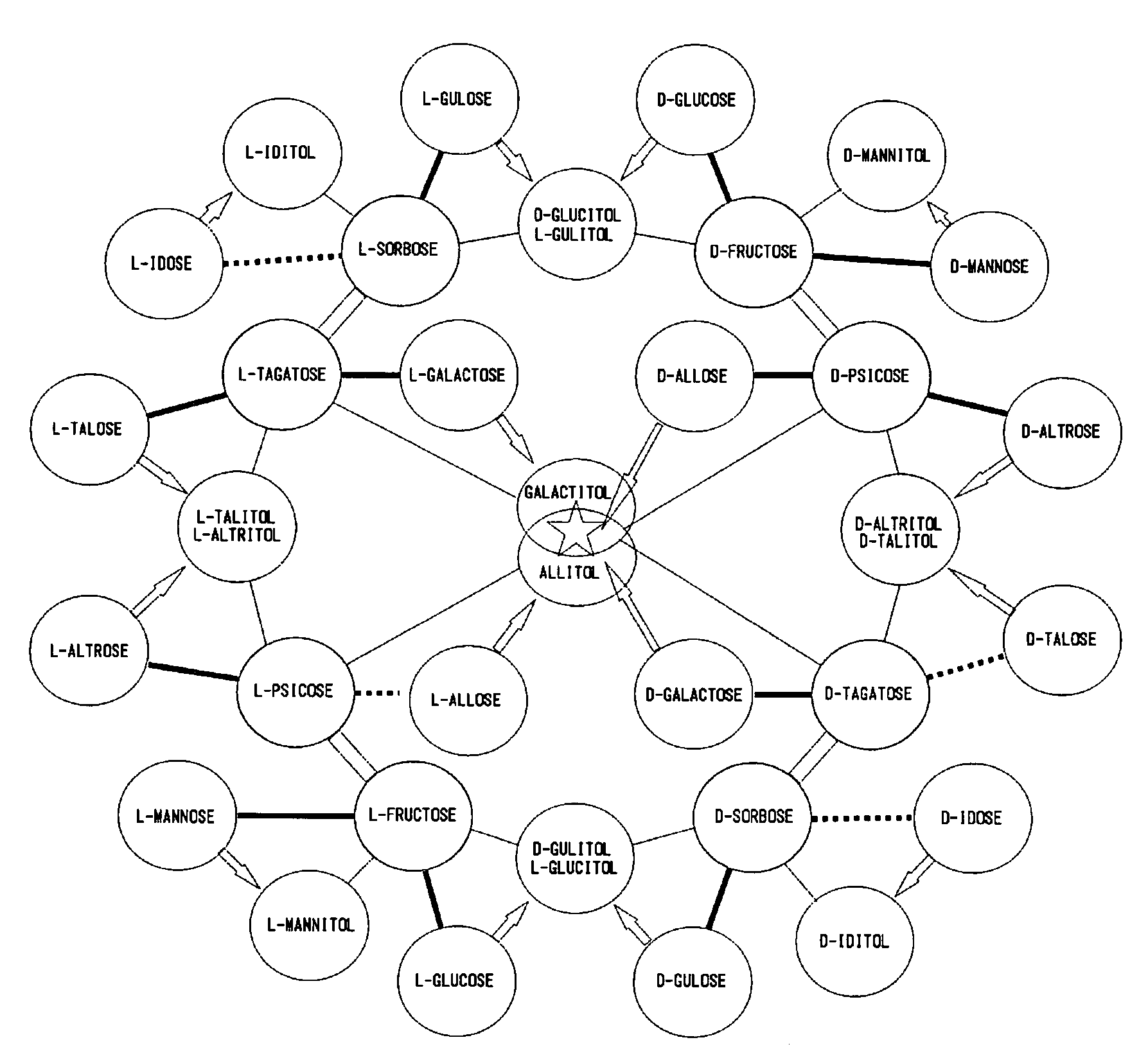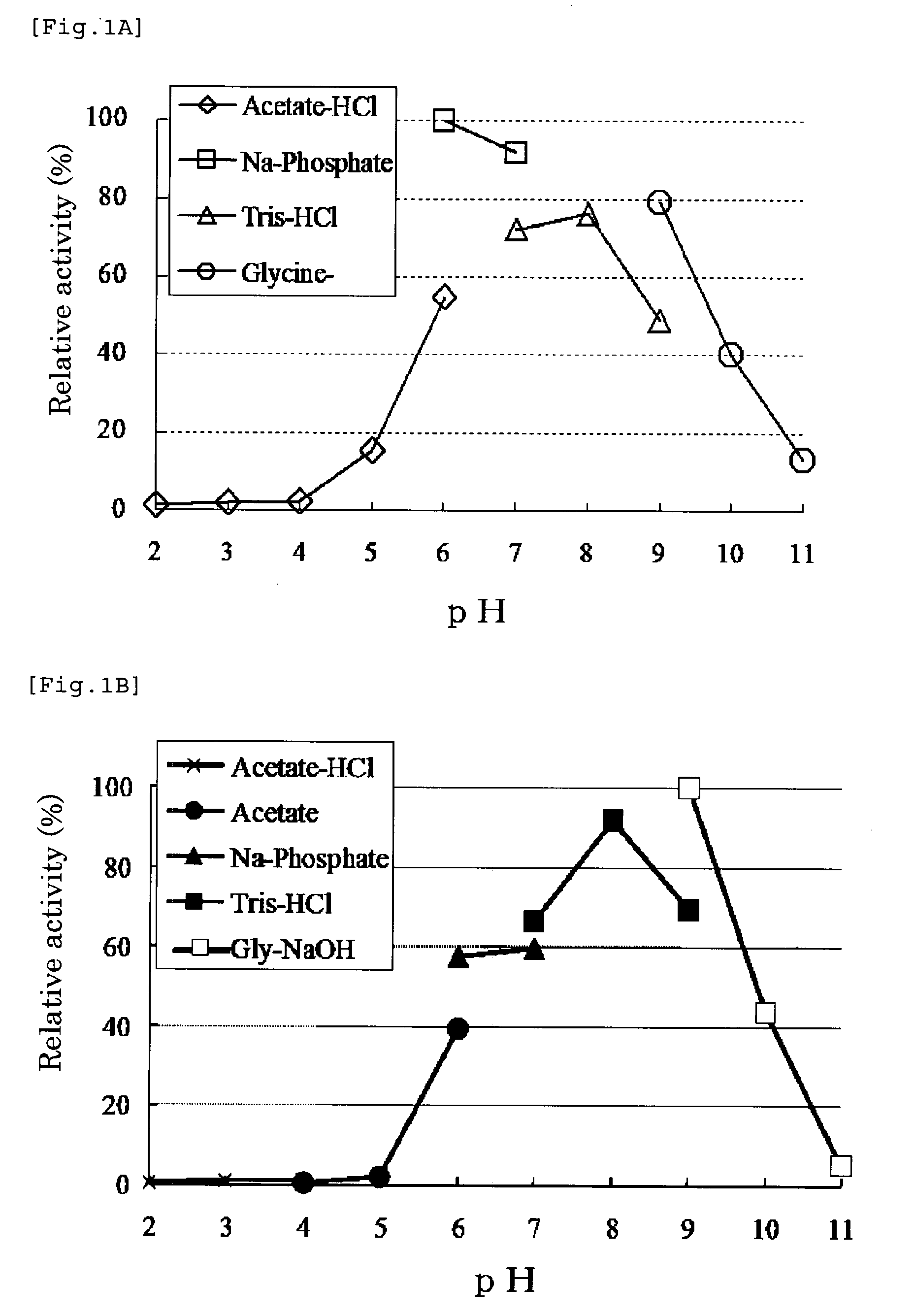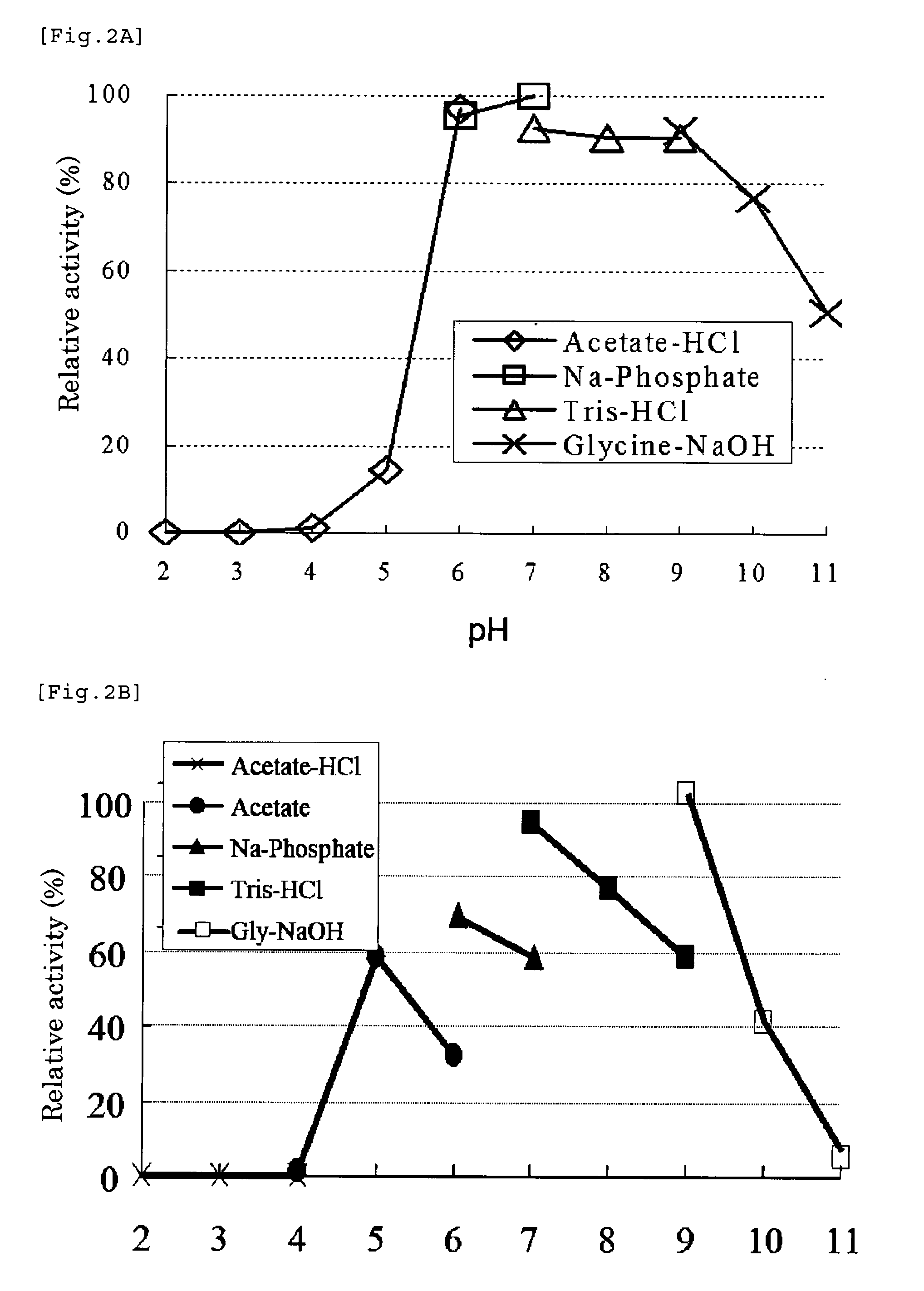Sequence of Thermotolerant L-Rhamnose Isomerase Gene and Use of the Same
a technology of thermotolerant lrhamnose and isomerase, which is applied in the field of gene sequence encoding thermotolerant lrhamnose isomerase, can solve the problems of increasing cost, reducing enzymatic activity, and significantly reducing purity or product yield, so as to reduce contamination, reduce ph, and raise the operating temperature of a bioreactor
- Summary
- Abstract
- Description
- Claims
- Application Information
AI Technical Summary
Benefits of technology
Problems solved by technology
Method used
Image
Examples
example 1
(Preparation of Enzyme)
Culture Condition of Microorganism
[0148]Bacillus stearothermophilus strain 14a (=Bacillus pallidus strain 14a) was inoculated into a yeast extract medium (pH 7.0) (0.5% yeast extract, 0.5% peptone, 0.5% NaCl, 3% L-sodium glutamate and 0.5% L-rhamnose), and aerobic shaking culture was carried out at 55° C. for 2 days.
Extraction of Crude Enzyme
[0149]Extraction of an enzyme from the microorganism was carried out by the alumina grinding method. That is, alumina and 7.59 g of bacterial cells were mixed in a mortar and ground for 30 minutes with a pestle, and extraction of enzyme was carried out with a 20 mM Tris-HCl buffer (pH 8.5), whereby 50 ml of a crude enzyme was obtained.
Purification of Enzyme
Step 1
[0150]A protein precipitated by gradually adding 15% polyethylene glycol 6000 ground into a powder to the crude enzyme solution was removed. The majority of the enzyme of interest was present in the supernatant, and the supernatant was used for the next purificati...
example 2
[0156]Object: L-rhamnose isomerase derived from Pseudomonas stutzeri is an enzyme catalyzing an isomerization reaction between L-rhamnose and L-rhamnulose, and it has been already known that it also catalyzes an isomerization reaction between D-psicose and D-allose. In this study, with the aim of obtaining a novel enzyme which has a higher reaction efficiency between D-psicose and D-allose and is excellent in thermal stability, various properties of L-rhamnose isomerase derived from Bacillus pallidus were examined.
[0157](1) Molecular Weight
[0158]The molecular weight of a monomer is about 45,000, and it is a tetramer composed of 4 subunits and having a molecular weight of about 180,000.
[0159]Method for determining molecular weight: As for the molecular weight of the enzyme, a molecular weight assay was carried out using high performance liquid chromatography. The determination conditions were as follows. AKTA system manufactured by Amersham was used as an apparatus, and Superdex 200 ...
example 3
[0176]Production of D-allose using L-rhamnose isomerase produced by Bacillus pallidus strain 14a (IPOD FERM AP-20172)
[0177]The Production of D-allose from D-psicose is carried out as follows. By using L-rhamnose isomerase produced by L-rhamnose isomerase produced by Bacillus pallidus strain 14a (IPOD FERM AP-20172), an immobilized enzyme is prepared by a crosslinking method with glutaraldehyde. Then, about 20000 units of immobilized enzyme is added to 100 ml of a 50% D-psicose solution (obtained by dissolving D-psicose in a glycine buffer (pH 9) containing 1 mM MnCl2) to allow a reaction to proceed at 60° C., whereby an enzymatic reaction solution is obtained. This reaction solution contains D-psicose and D-allose at final concentrations of 35% and 15%, respectively.
[0178]In this way, in the case where D-allose is produced by an enzymatic reaction using 50% D-psicose as a raw material, the product can be obtained as a mixed solution of 35% D-psicose and 15% D-allose.
[0179]From this ...
PUM
| Property | Measurement | Unit |
|---|---|---|
| temperature | aaaaa | aaaaa |
| temperature | aaaaa | aaaaa |
| temperature | aaaaa | aaaaa |
Abstract
Description
Claims
Application Information
 Login to View More
Login to View More - R&D
- Intellectual Property
- Life Sciences
- Materials
- Tech Scout
- Unparalleled Data Quality
- Higher Quality Content
- 60% Fewer Hallucinations
Browse by: Latest US Patents, China's latest patents, Technical Efficacy Thesaurus, Application Domain, Technology Topic, Popular Technical Reports.
© 2025 PatSnap. All rights reserved.Legal|Privacy policy|Modern Slavery Act Transparency Statement|Sitemap|About US| Contact US: help@patsnap.com



